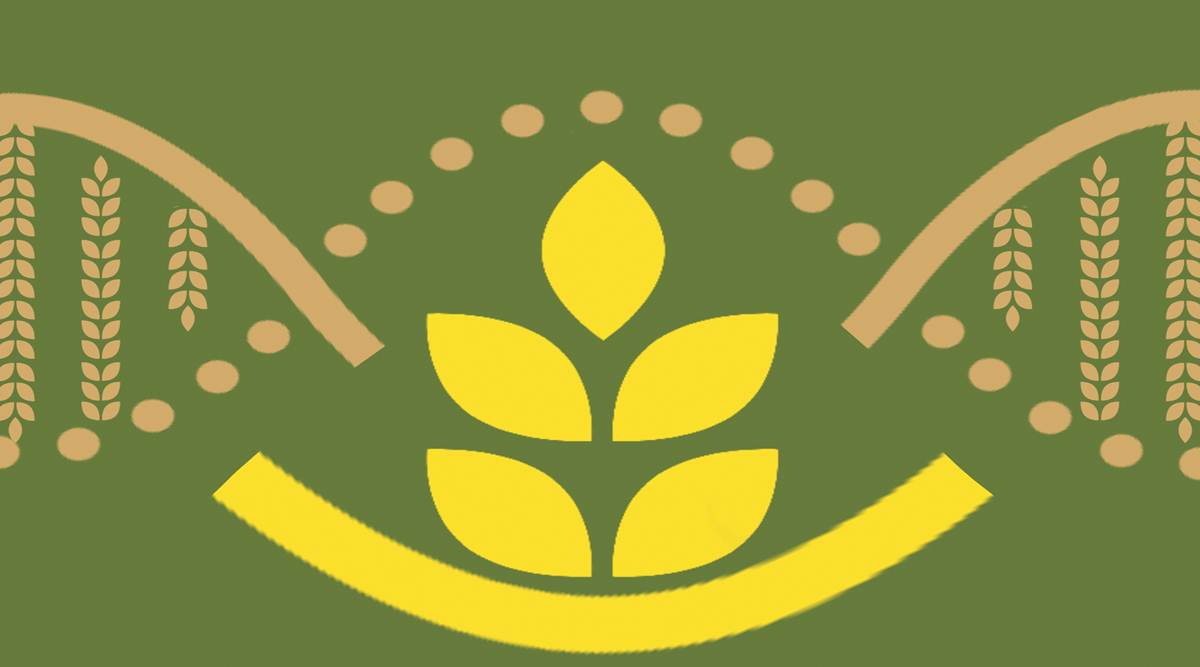 The primary underlying cause for mineral and vitamin deficiencies is low-quality diet. (Illustration by C R Sasikumar)
The primary underlying cause for mineral and vitamin deficiencies is low-quality diet. (Illustration by C R Sasikumar)On October 16, World Food Day, Prime Minister Narendra Modi issued a commemorative coin of Rs 75 and dedicated 17 bio-fortified varieties of eight crops to the nation to celebrate the establishment of the Food and Agriculture Organisation (FAO) 75 years ago, in 1945. A small plaque on the wall in the main lobby of the FAO headquarters in Rome reads: “In this building, 16th of October 1945, representatives of 44 nations met and established the Food and Agricultural Organisation, the first of the new United Nations Agencies. For the first time, nations organised to raise levels of nutrition and improve production and distribution of food and agricultural products.”
The point to be noted is that even 75 years ago, agriculture policymakers, in setting priorities, mentioned improving human nutrition before improving agricultural production. After all, a primary objective of agriculture is to produce food that provides enough minerals and vitamins that sustain healthy human beings. This is often forgotten in our efforts to improve agricultural productivity and raise farm incomes.
What we know today is that almost 2 billion women and children in low and middle-income countries (LMICs) are at risk for vitamin A, iron, and zinc deficiencies, leading to more sickness, increased number of deaths and lower cognitive ability — all combining to reduce economic growth significantly. The highest numbers of women and children suffering from this “hidden hunger” live in South Asia, especially India.
The primary underlying cause for mineral and vitamin deficiency is low-quality diet. The poor desire, but cannot afford to purchase sufficient quantities of vegetables, fruits, pulses, and animal products, which, gram for gram, contain relatively high amounts of bio-available minerals and vitamins, but whose prices have been rising much faster than staples like wheat, rice and corn over the past several decades. No wonder, poor people satisfy their hunger by consuming large amounts of food staples, which only changes at higher levels of incomes.
How to address the problem of low intake of minerals and vitamins through agriculture? There are two broad strategies. The first is to improve the densities of minerals and vitamins in the high amounts of food staples that the poor already consume. The second is to increase their consumption of nutritious non-staple foods. This second broad strategy fundamentally depends on raising incomes and lowering the real prices of non-staple foods.
Food staples are not dense on minerals and vitamins, but they do provide a broad range of essential minerals and vitamins — a base which needs to be strengthened by non-staple foods. The absolute intake of minerals and vitamins from food staples is the result of multiplying quantities consumed with the density. The first term in this multiplication, quantities consumed of food staples, is a high number.
The objective, then, within the sub-strategy of focusing on food staples, is to increase densities of nutritious components and decrease the densities of undesirable compounds. One way to do this is through conventional plant breeding. A term has been coined for this process, “bio-fortification.”
From that standpoint, Prime Minister Modi’s endorsement of eight bio-fortified crops is commendable. The credit for this also goes to the Indian Agricultural Research Institute (IARI) and many agri-scientists of India, such as MS Swaminathan, for their long-term vision and perseverance to develop these bio-fortified crops. These bio-fortified staples need to be closely linked to India’s food-based welfare programmes including the public distribution system (PDS) the mid-day meal and anganwadis and should become an integral part of the National Nutrition Mission (POSHAN Abhiyan). This would also help fight the adverse impact of Covid-19 on the nutrition of the country’s vulnerable population.
But linking agriculture and nutrition only starts with bio-fortification. We must not stop there. For example, recent evidence demonstrates that nitrogenous fertilisers increase the densities of proteins, minerals and vitamins in staple foods. Adding zinc and/or iodine to fertilisers and foliar sprays will also increase the zinc and iodine density in grains. There are synergies in combining these fertiliser strategies with bio-fortified crops. The evidence for these pathways was developed under the “Harvest Zinc” programme by Ismail Cakmak of Sabanci University in Turkey and his colleagues in LMICs, including India.
Fertilisers also augment productivity, keeping food prices lower than they would be otherwise. This is well understood in literature, but its impact on human nutrition is not well-quantified yet.
Turning now to vegetables, fruits, pulses, animal products — foods already dense in minerals and vitamins — the fundamental strategy should be to increase the supply of key foods that can contribute importantly to nutrient intakes. The supply can be increased cost-effectively through public policy and investments.
There are two fundamental points to make. First, the primary objective is to lower the real prices of these key food items. Second, these food items will vary greatly by country, depending on dietary patterns.
For example, the major push by the Indian government, called Operation Flood, improved the efficiency of milk production, a highly nutritious and important food in Indian diets. Supply went up sharply and the relative real price went down significantly. Milk consumption increased.
Investing in an efficient milk value chain in India was an incredibly “nutrition-smart” agricultural activity that benefitted millions throughout India. A similar push is needed today for fruits and vegetables, and pulses. The current reforms in farm laws offer an opportunity to develop similar value chains for these, as was done in milk.
Agricultural policymakers typically focus on increasing productivity and farmers’ incomes. But investing in improved nutrition through agriculture has extremely high economic payoffs. Prime Minister Modi should be complimented for drawing attention to bio-fortified basic staples and linking it to public food programmes.
Bouis is a World Food Laureate for his work on bio-fortification and Gulati is Infosys Chair Professor for Agriculture at ICRIER